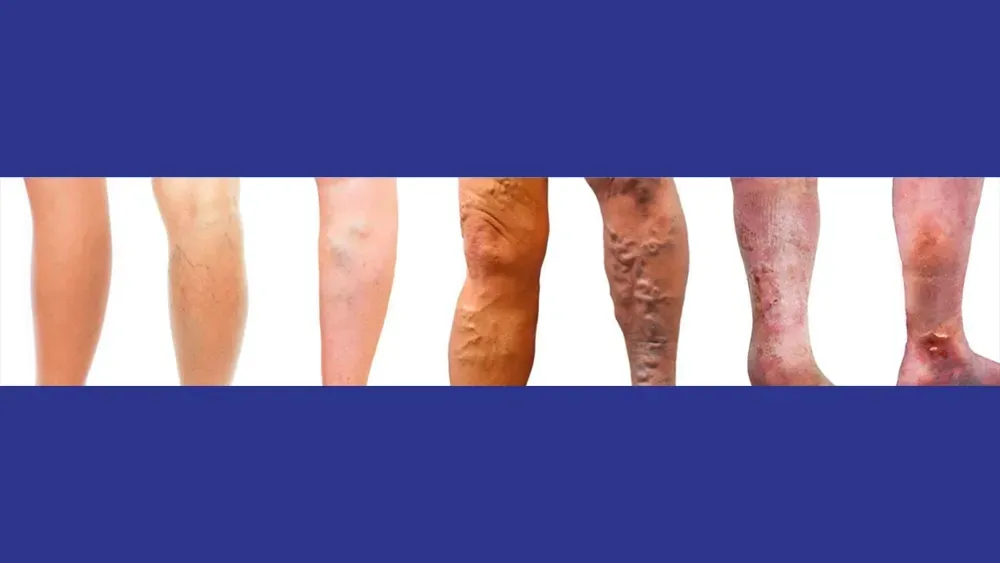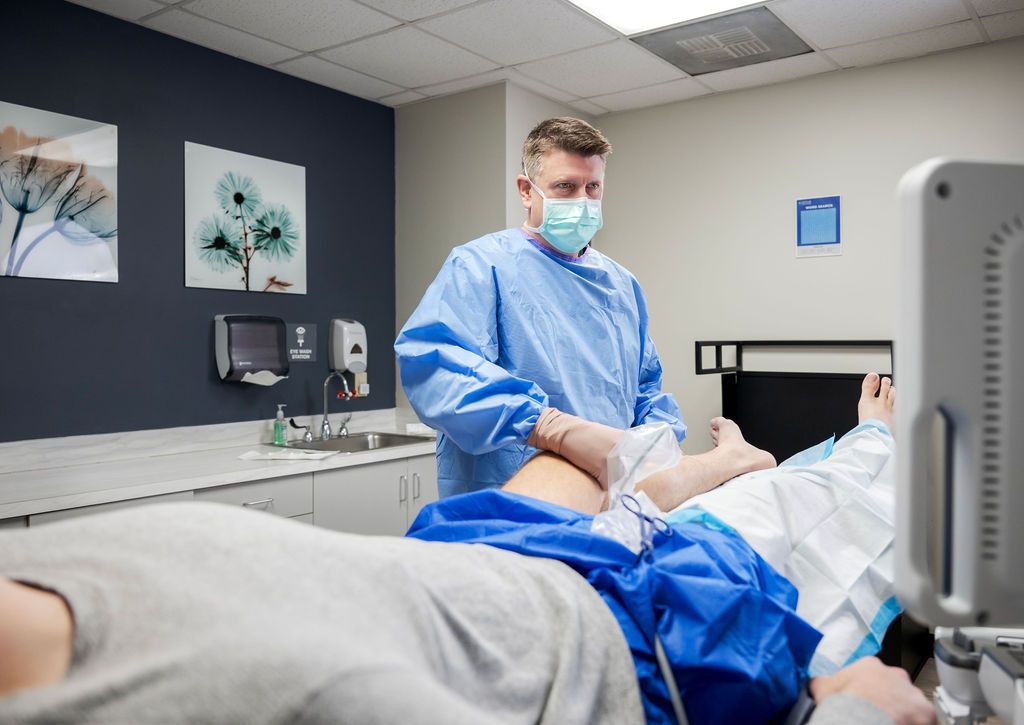Ankle Discoloration – What is Stasis Dermatitis? - Veins Charlotte Blog
Why are my ankles turning brown? What the heck is going on?
If you have noticed the skin on your lower leg getting browner than it used to be, you’re not alone. Ankle discoloration is a very common problem. The good news is that the underlying problem is easy to fix.
The most common cause of ankle discoloration is a vein condition called venous reflux. Venous reflux is where the valves in your leg veins have stopped working properly. Another name for this condition is venous insufficiency.
When the valves in your leg veins aren’t working properly back-pressure can build. This backpressure can result in microscopic leakage of blood from tiny blood vessels known as capillaries. Some degree of leakage of red blood cells is common, but the process happens to a much greater extent when back pressure is elevated.
After red blood cells have leaked through a capillary the body recognizes that these cells are in the wrong location. The body naturally begins to capture and recycle these stray red blood cells. This recycling process involves breaking the cells down into small sub-fragments.
The majority of recycled red blood cell fragments can be easily mopped up and reutilized by the body. There is one sub-component of the red blood cells that the body has difficulty recycling. This component is called hemosiderin.
Hemosiderin is a pigment contained within red blood cells. More specifically, hemosiderin is contained within hemoglobin, the portion of the red blood cell responsible for transporting oxygen.
Hemosiderin has a natural brown-bronze color. When hemosiderin accumulates within, or beneath the skin the brown-bronze color of hemosiderin becomes visible. This process is sometimes referred to as "hemosiderin staining".
Ankle discoloration can be patchy or widespread.
Patchy ankle discoloration sometimes looks like freckles or “sun-spots.” Widespread ankle discoloration will often look like a brown colored skin stain. Sometimes this skin discoloration will become dark brown. On occasion, the skin discoloration can have a dark-red or dark-purple hue.
In areas where the skin is discolored the skin will often become inflamed, irritated, and itchy. The name of this condition is stasis dermatitis. The word “stasis” refers to the pooling of blood that occurs when the veins are not working properly. The word “dermatitis” refers to inflammation of the skin.
Over time some people with longstanding ankle discoloration will develop leathery thickening of the skin and tissues underneath the skin. The medical term for this process is lipodermatosclerosis (LDS).
Occasionally people with ankle discoloration and stasis dermatitis will develop wounds or sores in the skin. The medical word for skin breakdown is “ulcer.” Sores or wounds that develop around the ankle in the setting of vein problems are known as venous ulcers.
Venous ulcers commonly occur on the inner ankle but can occur anywhere in the lower leg, from the heel to the mid-calf.
If you have ankle discoloration or stasis dermatitis you’ll likely have some great treatment options. The treatment of ankle discoloration is based upon what’s causing the problem.
To determine whether you have underlying venous reflux an ultrasound test will need to be performed. This ultrasound test will assess how the valves in your veins are functioning.
If you have venous reflux several procedures can be performed to eliminate the underlying vein problem. Once the vein problem is fixed the condition of the skin around the ankle will improve.
Will my current ankle discoloration improve after treatment?
It depends. Sometimes yes, and sometimes no.
The goals of vein treatment are to prevent further progression of skin discoloration, reduce or eliminate ankle pain/tenderness, and reduce the likelihood of skin breakdown/ulceration and infection.
If your discoloration is mild, not extensive, and if you have recently developed skin discoloration, these areas are more likely to resolve after treatment.
If you already have extensive, long-standing, dark ankle discoloration it’s quite probable that these areas may remain discolored, even after vein treatment. Some people will get a partial reduction of pre-existing skin discoloration.
What are my treatment options?
If you have underlying vein problems such as venous reflux the treatments are targeted towards this condition. Common treatments for venous reflux include ClosureFast (radiofrequency ablation), VenaSeal, and Varithena. These procedures eliminate blood flow in the bad veins, which reduces backpressure, which reduces excessive leakage of red-cells from the capillaries.
Sometimes if the skin around the ankle is severely inflamed there may be a role for a topical steroid cream, such as triamcinolone. Topical steroids should only be used on a short-term basis because long-term use can thin the skin, and cause other complications.
Occasionally if the skin is severely inflamed and or broken down (ulcerated) there may be the role for temporary application of a multi-layer compression bandage such as an Unna boot.
Peter Ford MD is a varicose veins specialist who practices at Vascular Solutions, the premier Charlotte vein center. Dr. Ford is an expert in diseases of the veins. We offer vein solutions individually tailored to your needs and specialize in vein treatments.
Contact our Charlotte vein clinic to schedule your new patient consultation.
SHARE:




